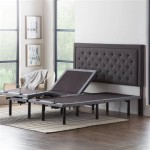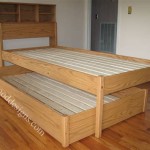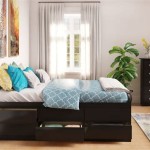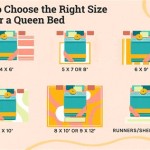Essential Aspects of US Queen Size Bed Dimensions
When selecting a new bed, understanding bed dimensions is crucial to ensure a comfortable and restful sleep experience. Queen size beds, a popular choice for couples and individuals alike, offer ample space and versatility for various room sizes and sleeping styles.
In the United States, standard queen size bed dimensions measure 60 inches (152.4 centimeters) in width and 80 inches (203.2 centimeters) in length. This generous size provides ample sleeping area for two people while maintaining a compact footprint compared to larger bed sizes like king or California king.
Mattress Thickness
When considering queen size bed dimensions, it's essential to factor in the mattress thickness. The thickness of the mattress can vary depending on the type of mattress (e.g., innerspring, memory foam, hybrid) and the desired level of support and comfort. A thin mattress, around 6-8 inches (15.2-20.3 centimeters) thick, will result in a lower overall bed height.
Conversely, a thicker mattress, such as 10-12 inches (25.4-30.5 centimeters) thick, will elevate the overall height of the bed. Some mattresses, especially pillow-top mattresses, may add even more height. Consider the desired height and support when selecting a mattress to complement the queen size bed frame.
Headboard and Footboard Considerations
Headboards and footboards not only add style and personality to a bedroom but also impact the overall dimensions of the queen size bed. Headboards typically range from 4-8 inches (10.2-20.3 centimeters) in depth, and footboards can add an additional 10-12 inches (25.4-30.5 centimeters) in length.
If the queen size bed is placed against a wall or in a corner, the headboard's depth will extend the overall length of the bed. Similarly, the footboard's length will add to the overall width when placed at the foot of the bed. Consider these dimensions when planning the placement of the bed in the bedroom.
Additional Space Requirements
Beyond the immediate dimensions of the queen size bed, additional space is necessary for comfortable movement and placement. A general rule of thumb is to allow at least 24 inches (61 centimeters) of clearance on all sides of the bed. This space allows for easy access, prevents bumping into furniture, and creates a sense of openness.
If nightstands are used, consider their width and ensure there is sufficient space between them and the bed. Similarly, allow for space to open drawers or doors without obstruction. By incorporating these additional space requirements, you can create a comfortable and functional sleeping environment.
Choosing the Right Queen Size Bed
Choosing the right queen size bed boils down to personal preferences and available space. If you prioritize ample sleeping area for two people and have a room size that can accommodate a larger bed, a queen size bed is a suitable choice.
Consider the thickness of the mattress, headboard and footboard dimensions, and additional space requirements when making your selection. By carefully considering these aspects, you can ensure that your queen size bed provides a comfortable and restful sleep experience for years to come.

Mattress Sizes Chart And Bed Dimensions Guide Amerisleep

Mattress Size Chart Common Dimensions Of Us Mattresses Twin Bed Charts

Queen Bed Dimensions A Guide Nectar Sleep

Bed Size

Bed Sizes And Mattress Chart Us Size

Mattress Size Chart Bed Dimensions 2024 Guide U S News

Mattress Sizes Chart And Bed Dimensions Guide

Mattress Sizes And Bed Dimensions For Room Size Needs Eachnight

Full Vs Queen Size Bed 2024 Mattress Nerd

Comprehensive Guide To Bed Sizes And Dimensions
Related Posts







